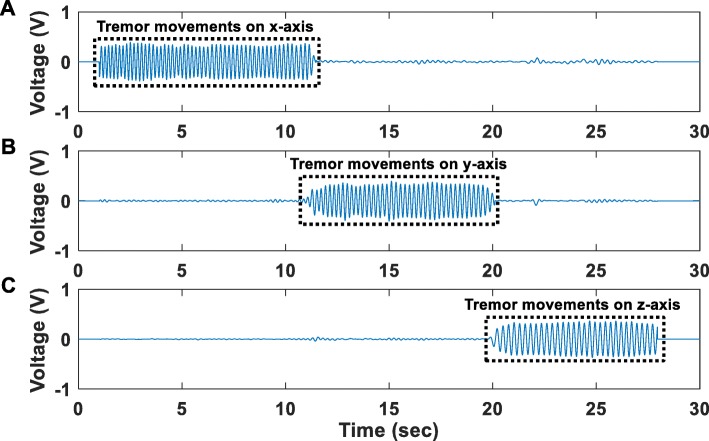Fig. 15.
Time-domain profiles of acceleration signals recorded during three separate sessions. (a) during the first session, movements of the proposed instrument’s PCB, where the accelerometer is located, were produced along the x-axis for a duration of approximately 9 s (b) during the second session, movements of the proposed instrument’s PCB were produced along the y-axis for a duration of approximately 9 s (c) during the third session, movements of the proposed instrument’s PCB were produced along the z-axis for a duration of approximately 9 s. In all recording sessions, the instrument started from immobility and at the end of the produced movements it returned back to immobility. Clearly, under all examined circumstances (tremor movements in X, Y and Z axes), the accelerometer was able to successfully discriminate the state of immobility from the state where tremor occurs

